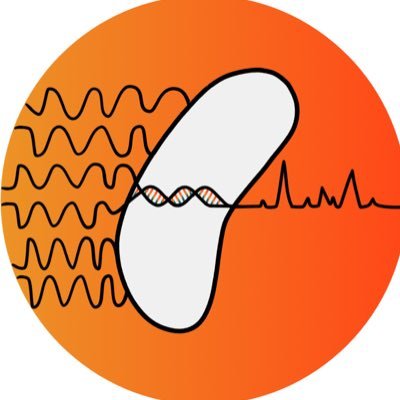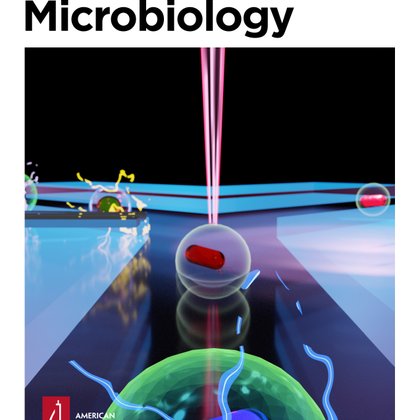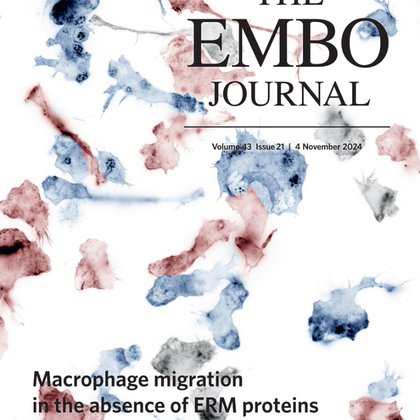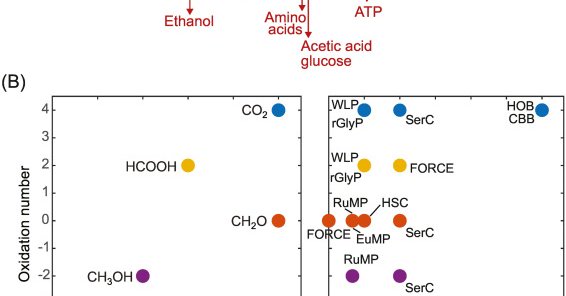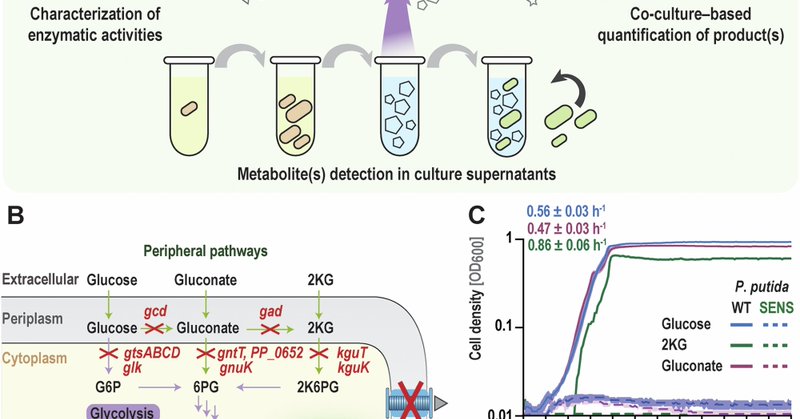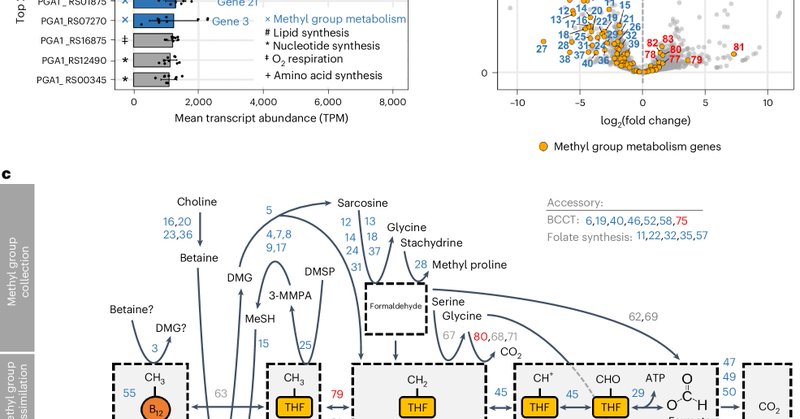
Biki Kundu
@Bacterioman99
Followers
299
Following
776
Media
0
Statuses
377
PhD candidate | Caroline Ajo-Franklin Lab | @RiceSSPB
Houston, TX
Joined January 2019
Unveiling the unfamiliar within the familiar: Our latest preprint, in collaboration with @ucsd_sbrg, presents a comprehensive study of Extracellular Electron Transfer in E. coli.
A team led by the Ajo-Franklin group’s very own @Bacterioman99 has uncovered the mechanism through which E. coli utilizes redox shuttles for extracellular respiration and growth, showcasing the unexpected versatility of microbial metabolism
0
6
17
Glad to see my main PhD project finally out @NatureMicrobiol
https://t.co/GPTpkClhBI We show for the first time that a synthetic and engineered pathway can indeed exceed nature at one-carbon fixation.
nature.com
Nature Microbiology - An engineered one-carbon-fixation pathway increases biomass yields of Cupriavidus necator compared with the Calvin cycle and can support future, sustainable bio-based production.
2
36
106
The phospho-ferrozine assay: a tool to study bacterial redox-active metabolites produced at the plant root
journals.asm.org
By secreting secondary metabolites, bacteria at the plant root can defend against diseases and help acquire essential nutrients. However, the genes that synthesize secondary metabolites are typically...
0
6
20
OmpA controls order in the outer membrane and shares the mechanical load
pubmed.ncbi.nlm.nih.gov
OmpA, a predominant outer membrane (OM) protein in Escherichia coli, affects virulence, adhesion, and bacterial OM integrity. However, despite more than 50 y of research, the molecular basis for the...
1
4
8
Enhanced extracellular matrix production provides protection to cell wall-deficient Escherichia coli https://t.co/V99VLUgDJp
#biorxiv_micrbio
0
2
6
Tired of low heterologous biosynthesis yields? Try GrowBio to rapidly make g/l bioproduction. Just give synthetic cells a reason to make your favorite compound like the octopus pigment xanthommatin. Led by @LeahBushin and out at
biorxiv.org
The mining of genomes across life has unearthed a bounty of biosynthetic potential to diverse molecules key to a biobased future. While the heterologous expression of metabolic pathways has achieved...
1
13
57
Toxin-mediated depletion of NAD and NADP drives persister formation in a human pathogen | The EMBO Journal
embopress.org
imageimageThe toxin-antitoxin system NatR-NatT promotes persister formation in Pseudomonas aeruginosa. This study shows that NatT acts by depleting the essential co-factors NAD and NADP and promotes...
0
4
21
Online now: Bringing carbon to life via one-carbon metabolism
cell.com
One-carbon (C1) compounds found in greenhouse gases and industrial waste streams are underutilized carbon and energy sources. While various biological and chemical means exist for converting C1...
0
1
5
A versatile #microbial platform as a tunable whole-cell #chemical #sensor | #Pseudomonas putida engineered to detect a variety of molecules (including #sensing #plastic #degradation) by @Javi_HernanSan @Daniel__Volke et al. @LabNikel @DTUBiosustain
https://t.co/vqoqOFEnMT
nature.com
Nature Communications - Biosensors are powerful tools for quantification of a wide range of molecules but require extensive engineering for each analyte. Here, the authors engineered a robust...
2
38
161
Our paper out today @nature: phages reconstitute NAD+ to counter bacterial immunity Phaged invented a new biochemical pathway for NAD+ synthesis - including previously unknown enzymatic reactions - to evade bacterial defenses Congrats @IlyaOsterman! https://t.co/JuzwDHmlFU
6
134
451
With #glyoxylate as core intermediate of synthetic #carbon fixation cycles, coupling #growth to its availability is essential for their engineering. Guess what: we engineered & constructed six glyoxylate/glycolate #sensor strains! Read the preview below: https://t.co/2oVJANwtVz
biorxiv.org
Metabolic sensors are microbial strains modified so that biomass formation correlates with the availability of specific metabolites. These sensors are essential for bioengineering (e.g. in growth-c...
1
13
41
Biogeochemical cycles of #iron: Processes, mechanisms, and environmental implications https://t.co/vJqb24iuiw
1
10
47
Harnessing the high product titers from fermentations for aerobic productions? Metabolic rewiring makes that possible! Read below to get to know my NNmini strain allowing the selective use of respiratory modules to re-balance unbalanced fermentations! https://t.co/GheBBjW5Xh
1
21
61
Microbial Primer: What is the stringent response and how does it allow bacteria to survive stress?
microbiologyresearch.org
0
4
6
About 25% of anaerobic microorganisms do fermentation. Hackmann maps out glucose fermentation pathways, reviews genomic and enzymological aspects of #fermentation and discusses its application to agriculture, health, and industry. #FEMSMicrobiolRev
https://t.co/EaQfzBLTh9
0
13
21
100 years of the Warburg effect: A cancer metabolism endeavor: Cell https://t.co/X7J6Z50jW9 directly from Sara @FendtLab
2
53
179
Sustainable power generation from sewage with engineered microorganisms as electrocatalysts https://t.co/WqliaSSZsX
0
18
85
Sensing cellular growth rate facilitates its robust optimal adaptation to changing conditions https://t.co/luhyddg9tB
0
3
16
Physiology, fast and slow: bacterial response to variable resource stoichiometry and dilution rate https://t.co/Kiz0BwIiVU
0
4
24
Robustness of mitochondrial biogenesis and respiration explain aerobic glycolysis https://t.co/qjzBZY7M6T
#biorxiv_sysbio
0
2
4
Our new paper reveals a remarkable ability in marine bacteria: they extract methyl groups from algal metabolites, creating a metabolic shortcut that accelerates the shift from lag phase to growth. Expertly led by @MartinSperfeld and @Narvaez_Delia_ https://t.co/YrxFvWEShf
nature.com
Nature Microbiology - Algal-associated bacteria assimilate methyl groups through the methionine cycle as ready-made carbon building blocks that jump-start growth.
5
25
57
